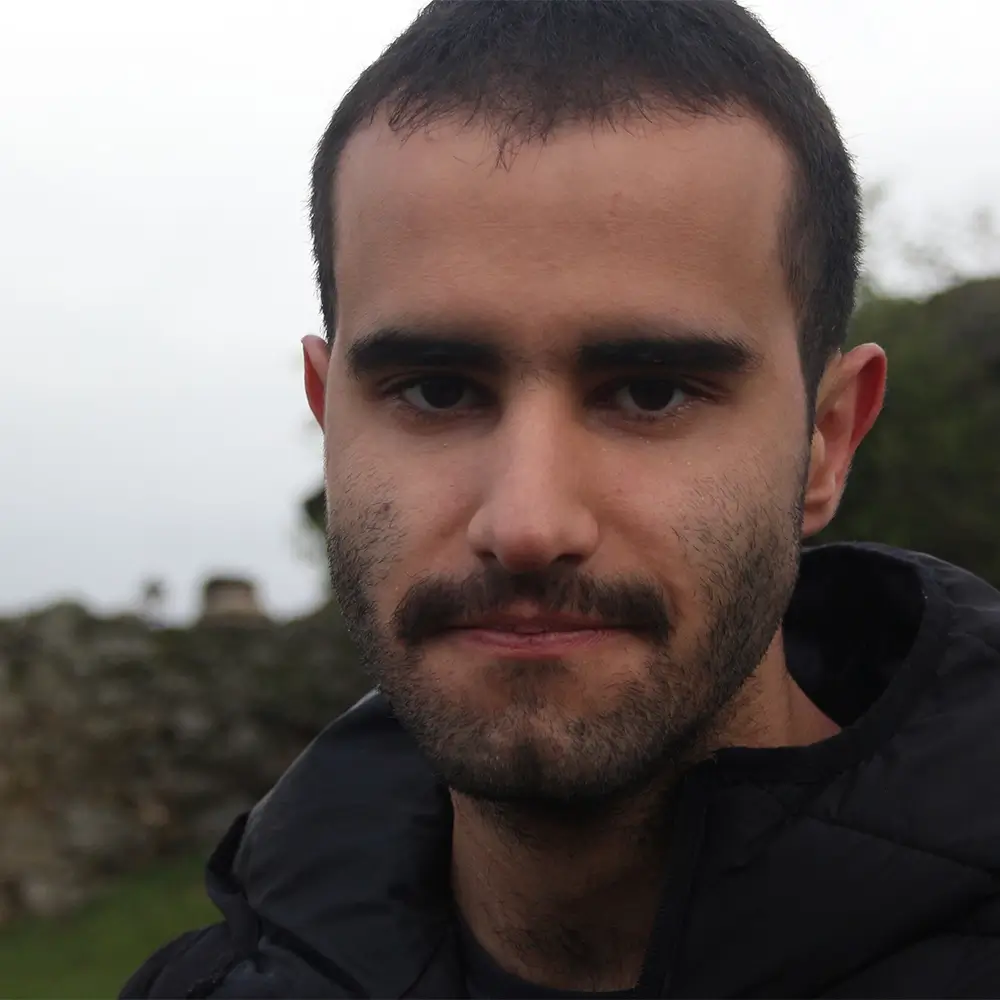Miguel Bláquez was born in 2001 in Ávila, Spain. He is a prominent video artist
with a strong academic background in the visual arts. He earned a Bachelor of Arts from
the Escuela de Arte y Superior de Conservación y Restauración de Bienes Culturales
de Ávila. Later, he pursued a Degree in Fine Arts at the Faculty of Fine Arts of the
University of Salamanca.
During his time at university, Blázquez actively participated in projects such as the
Audiovisual Art Exhibition by the 4th Year Fine Arts students at the Juan del Enzina
Theater in Salamanca. His talent was recognized when he won the XXVII edition of the
San Marcos Awards in the “Audiovisual” category, with his work exhibited at the Museum
of Contemporary Art of Salamanca (DA2) in 2024. Additionally, his piece “El vídeo más
grande del mundo” was showcased at the (S8) XV Mostra Internacional de Cinema
Periférico in A Coruña. Another of his works, “Vídeo ensayo”, was exhibited at the
Condeduque Contemporary Culture Center in Madrid in 2023.
Blázquez continues to establish himself as a talented video artist, constantly exploring
and contributing to the world of art.
Statement
My photographic work often captures spectacular scenes that pay humble homage to
the world around us. As a documentary artist, I prioritize exploring the depth and meaning
within images over adhering to formal conventions. I am particularly drawn to both human
and natural landscapes.
As a photographer and videographer, I believe in the power of visual storytelling to ignite
conversations, challenge perspectives, and foster empathy. My work serves as an
invitation to explore and connect with the world in meaningful ways.
My primary photographic influences include Tavepong Pratoomwong (Thailand), Victor
Galeano (Colombia), Freddy Rodríguez Robles (Peru), Javier Arcenillas (Spain), Óscar
Corral (Spain), Graciela Iturbide (Mexico), Leo Matiz Espinoza (Colombia), and Santiago
Botero (Colombia).
ARTICLE
El cañón del Río Melcocho